A brief history of time
To mark the start of British Summer Time, we explore Cambridge's most iconic clocks.
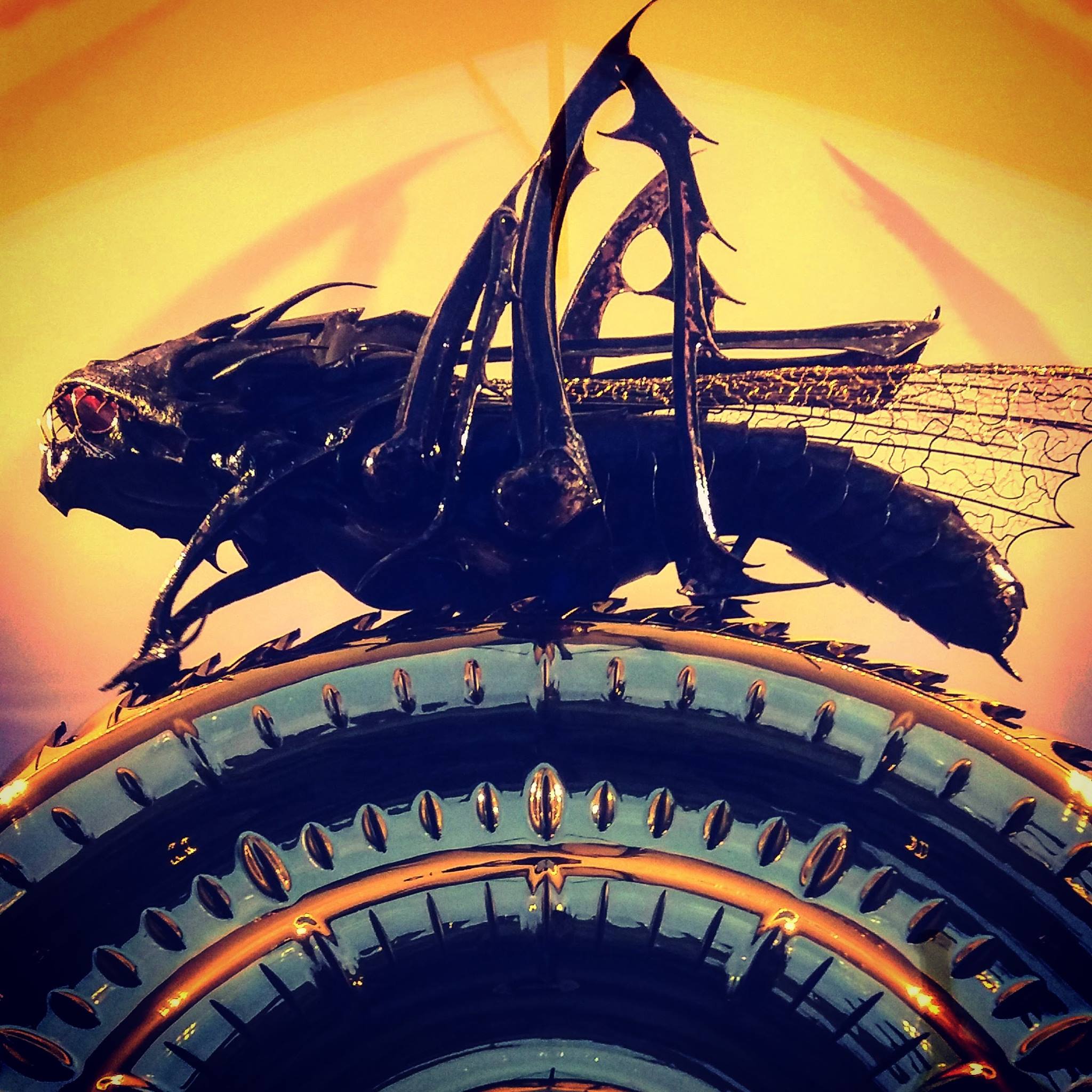
Did you remember that the clocks went forward this weekend? The start of British Summer Time means an hour less in bed on Sunday morning, but on the plus side it heralds the arrival of warmer and lighter days – in theory at least!
Here at the University the spring into summer inspired us to celebrate the clocks across Cambridge and its colleges, and the weird and wonderful stories behind them.
This is just a selection….
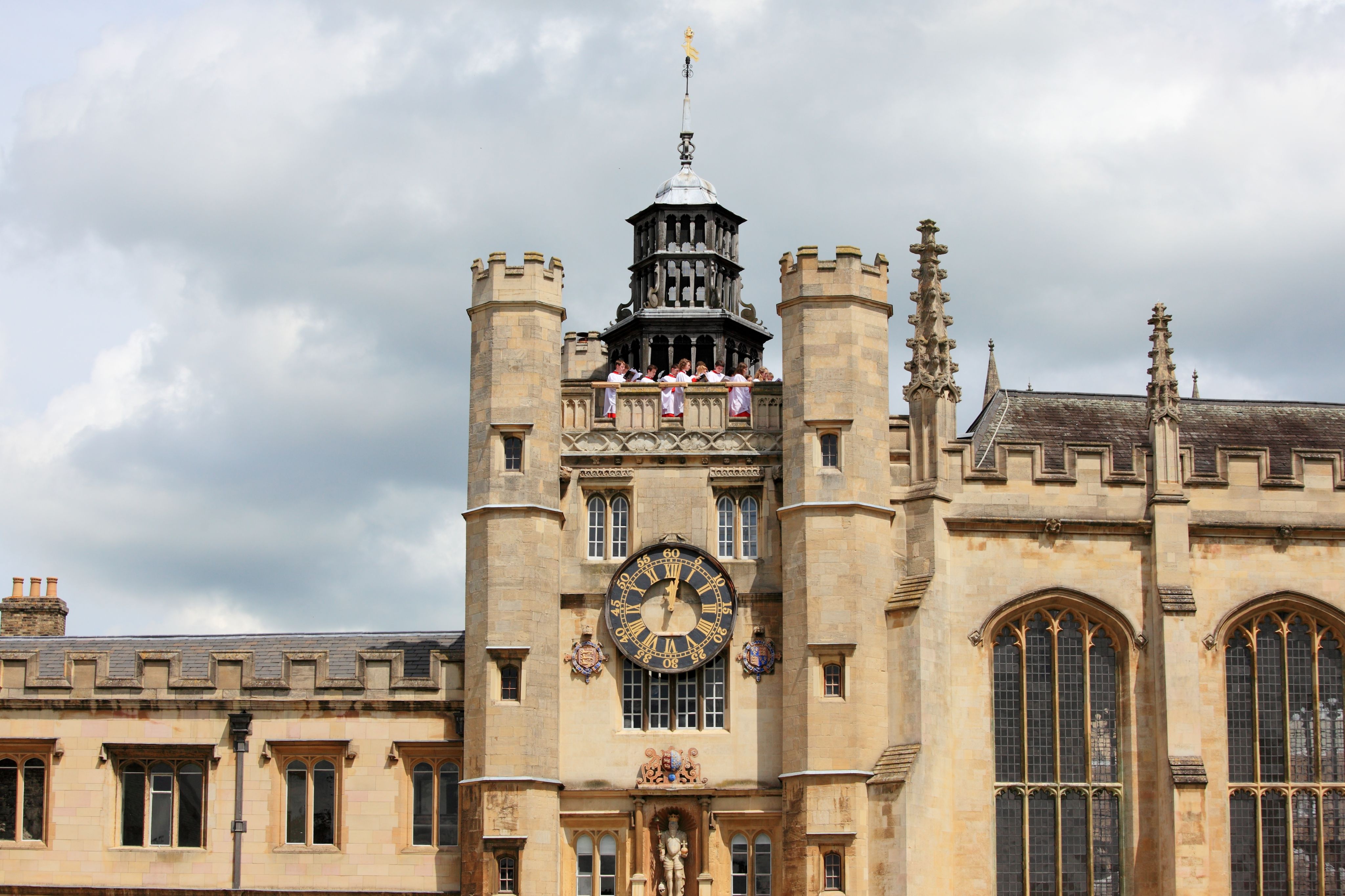
The Trinity Clock, with choir singers above
The Trinity Clock, with choir singers above
Trinity College
The Trinity Clock is intriguing in that it strikes the hour twice.
The clock was installed in the eighteenth century by its then-Master, Richard Bentley, a former student of St John’s. Bentley ordered that the clock chime first on a low note for his current college Trinity and then on a higher note for his alma mater.
St John’s alumnus William Wordsworth famously wrote about the clock in his poem The Prelude.
Near me hung Trinity’s loquacious clock,
Who never let the quarters, night or day,
Slip by him unproclaimed, and told the hours
Twice over with a male and female voice.
William Wordsworth, The Prelude
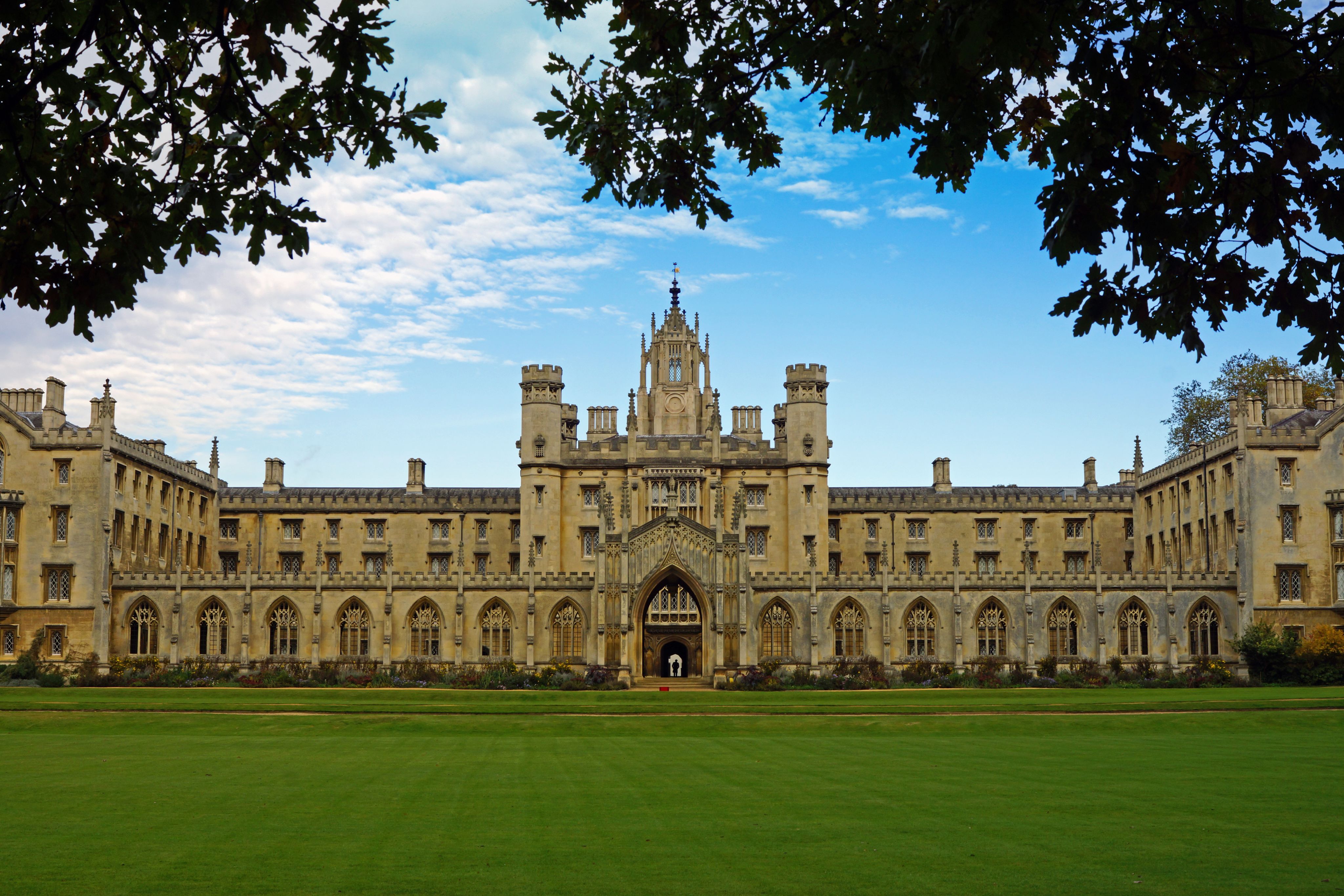
St John's College
One place where staff don't have to worry about winding the clocks forward is St John’s College’s New Court. The imposing 19th-century neo-Gothic residential building, which faces the Backs, bears four blank clock faces on its central cupola, affectionately known as ‘The Wedding Cake’.
New Court was completed in 1831 to the designs of architects Thomas Rickman and Henry Hutchinson, but the College has no record of an intention for a clock. The 1826 drawings do not even show the circles on the building where intrigued observers assume the clocks should be.
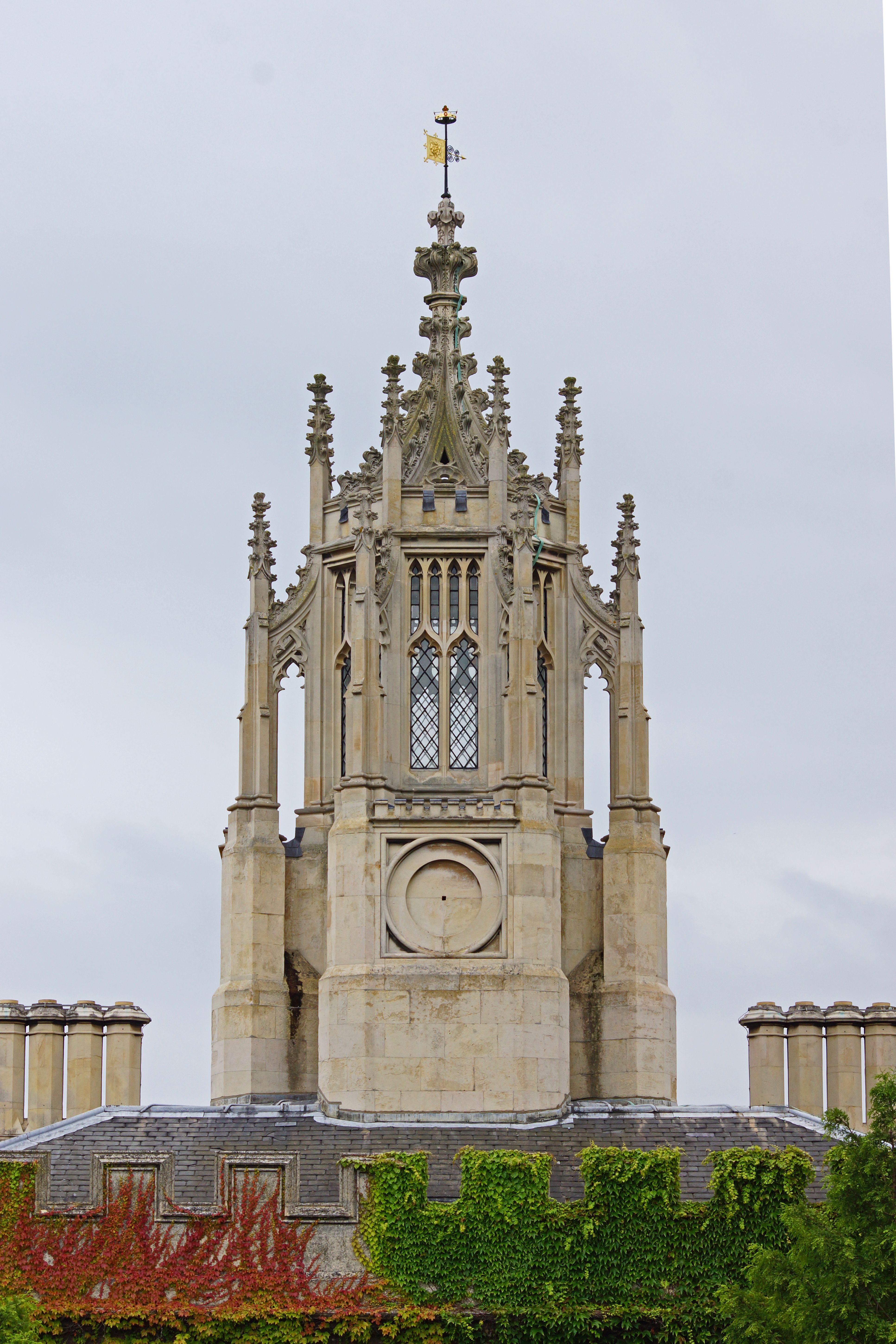
There are many theories why the clocks are missing – the most likely being that the money ran out. Lynsey Darby, Archivist, St John’s College, says: “Plans for a clock don't feature in the original schedule of works agreed with the architects; if the intention had been to leave the way open for clock faces to be installed at a future date, the overall expenditure on the building would not have allowed for it, with the debt incurred not finally being paid off until 30 years after work commenced.”
But that’s not to say that St John’s has no clocks. The college boasts a 1763 Shelton regulator, a highly accurate long-case clock. Astronomical clocks – or ‘regulators’ – are so-called because they were the time pieces by which other clocks were set.
The St John’s Shelton clock was one of five or six made by London clockmaker John Shelton, one of which went on Captain James Cook’s voyage of 1768 aboard HMS Endeavour.
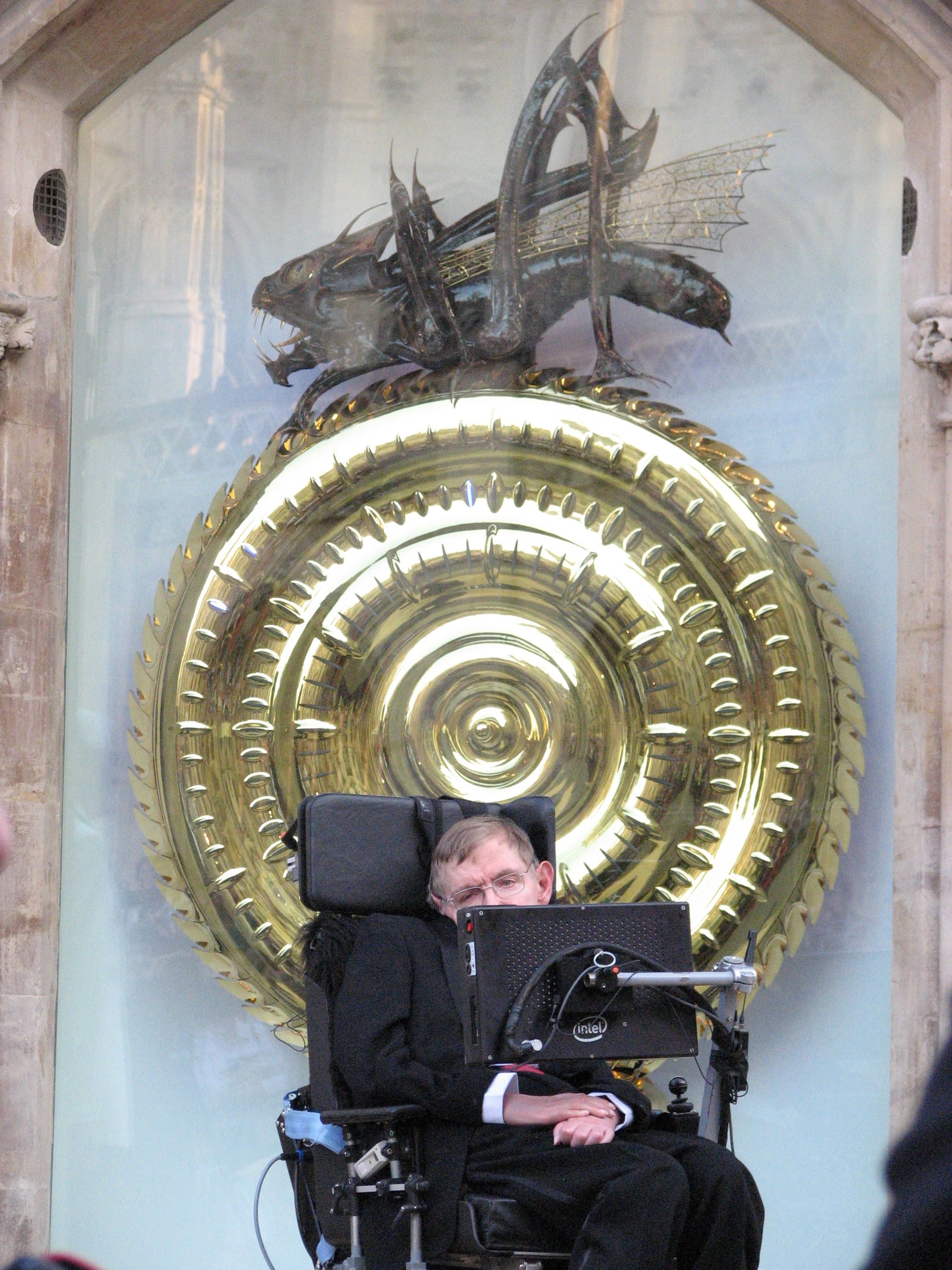
Professor Stephen Hawking, in front of the Corpus Clock which he unveiled in 2008
Professor Stephen Hawking, who unveiled the Corpus Clock in 2008
Corpus Christi College
From the old to the new, and Corpus Christi’s Chronophage Clock is something that has become a major visitor attraction since its installation in 2008.
The clock was invented, designed and given to the College by alumnus Dr John C Taylor OBE, who is famous for having invented the bimetallic thermostat control used in your electric kettle.
The clock is unique in that its Grasshopper Escapement mechanism is literally a model of a grasshopper, which appears to eat time - hence the term 'Chronophage' (time-eater). When the hour is struck, there is no chiming of bells, but instead the rustling of chains and the sound of a hammer striking a wooden coffin, reminding all observers of their mortality...
And the Custodian of the clock Prof Ewan St John Smith won’t be needing to wind this clock forward because it regulates itself, running 10 per cent fast to catch up.
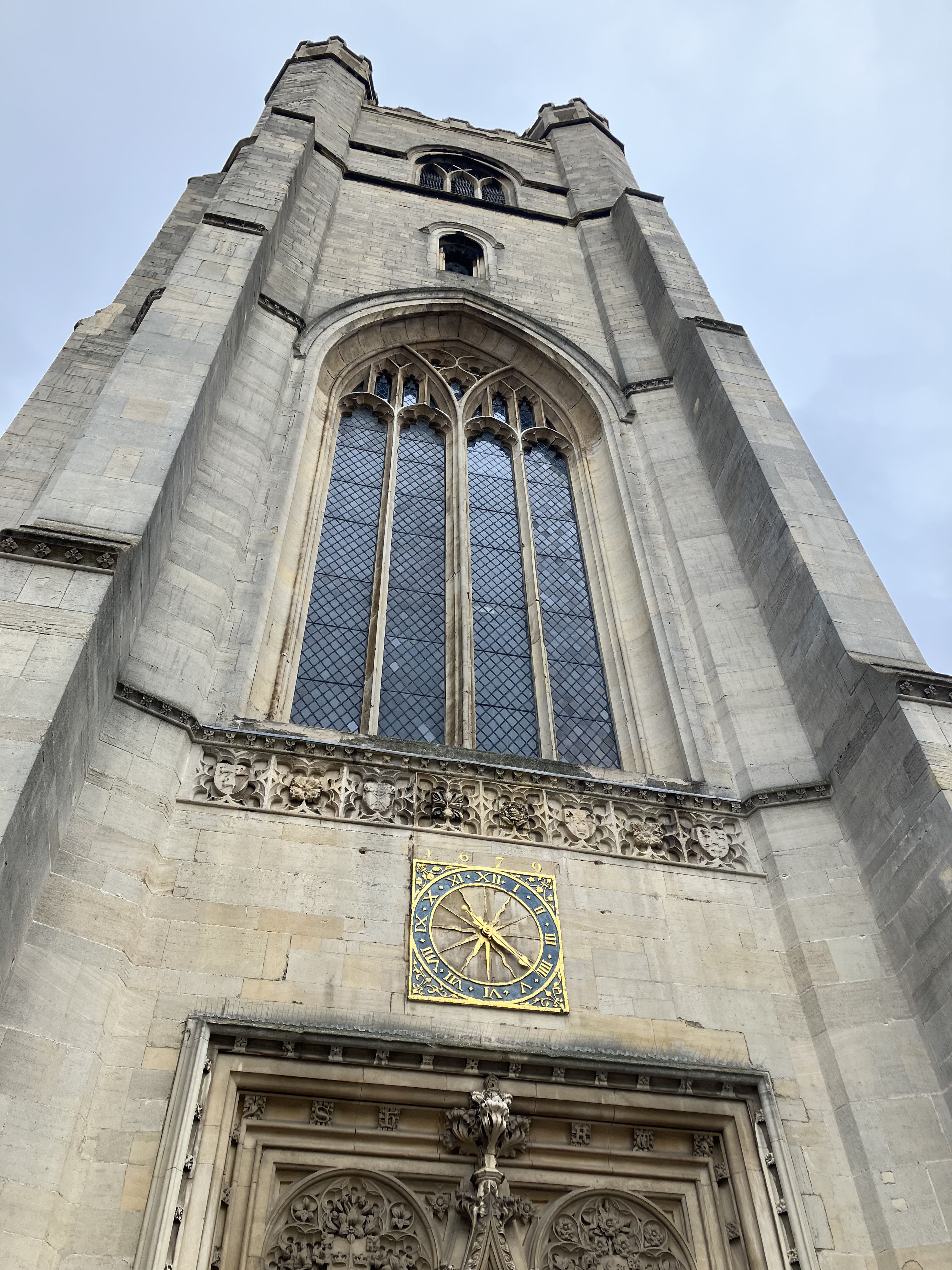
Great St Mary's
The official University Clock is housed in the tower of the University Church, otherwise known as Great St Mary’s.
Its chimes, called the Cambridge Quarters, might sound familiar – and that’s because they were copied by Big Ben, as the Palace of Westminster’ Elizabeth Tower clock has come to be known, and subsequently made famous around the world.
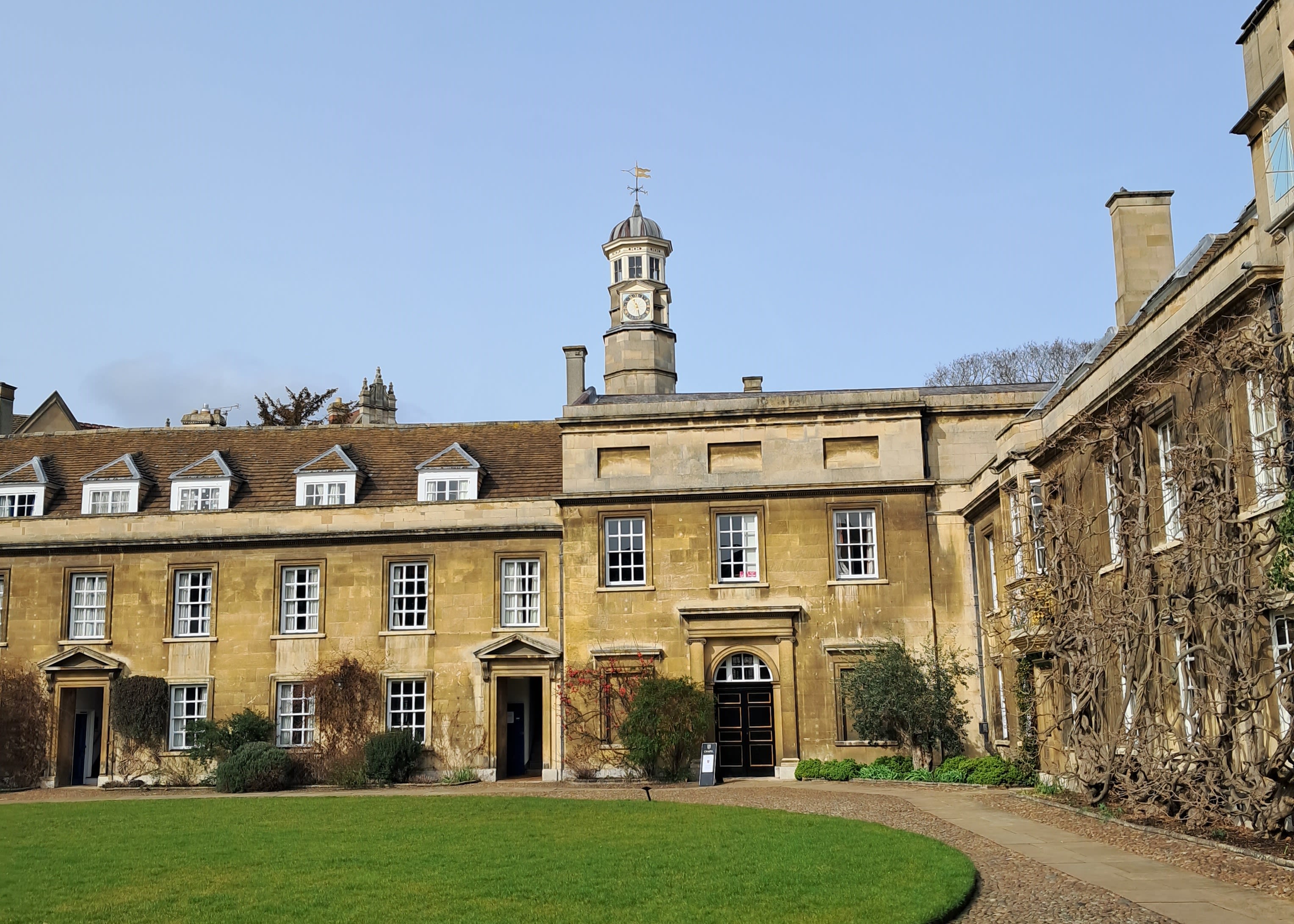
And last but not least...
Christ's College
The University Clock at Great St Mary’s gets a mention in a novel by Christ’s Fellow, C P Snow. Although he said that the college in The Masters was fictional it’s thought he’s referring to Christ’s clock in the following passage...
"When I awoke next morning, the bedroom seemed puzzlingly bright...The quarters chimed, first from a distance away, then from Great St. Mary’s, then from the college clock, then from a college close by. The last whirr and clang were not long over when, soft-footedly, Bidwell came in. The blind flew up, the room was all a-glare; Bidwell studied his own watch, peered at the college clock, uttered his sacramental phrase: ‘That’s nine o’clock, sir."
C. P. Snow, The Masters (London, 1951)
Published 24 March 2023
Photos: Corpus Christi College, University of Cambridge, St John’s College, Hilary Fletcher, Christ’s College
Design: Hilary Fletcher
The text in this work is licensed under a Creative Commons Attribution 4.0 International License.